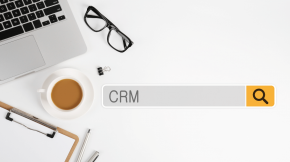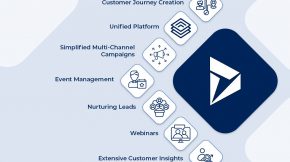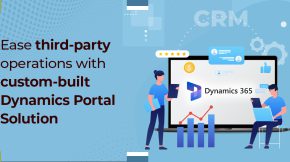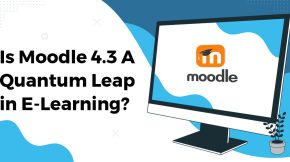Compare the Top BI Tools: Power BI vs Tableau vs Qlik vs Domo
How smart are your organizations’ decisions? Do you have the right information to make those decisions in the first place? To help you improve the quality of your enterprises’ decision-making process, we reviewed the top four business intelligence (BI) tools on the market today. Below you can find the benefits, features, and challenges for the top four BI tools on the market today (Power BI Vs Tableau Vs Qlik Vs Domo).
What is a business intelligence tool?
Before we discuss the four main BI tools below, it is important to take a moment to understand why these tools can help your organization.
Business Intelligence is part of data analytics. BI uses data to help organizations make smarter decisions based on past results. Because of this focus on the past, business intelligence is often called descriptive analytics since it describes what already happened in the organization.
The main benefit of BI tools like the ones below is they aggregate the data in a central visual dashboard. Businesses can share these dashboards with their management teams as reports.
Many BI tools today have expanded past the basic visual dashboards they were in the past to include predictive analytics features. Predictive analytics predicts an enterprise’s future events based on past events and artificial intelligence. As organizations send more data to their business intelligence solution, its power of prediction increases.
By looking at the organizations’ story, executives can decide the best course of action. As BI tools improve, they learn how to help executives improve their decisions. This is called prescriptive analytics.
Prescriptive analytics examines the possible outcomes from each recommendation and then offers what the computer believes is the best outcome possible. We have done a detailed comparison on Power BI Vs Tableau Vs Domo Vs Qlik on the best business intelligence tools. What are their pros and cons?
The BI tools below can help organizations make smarter decisions based on descriptive, predictive, and prescriptive analytics.
Comparing Business Intelligence Tools Power BI Vs Tableau Vs Domo
Description– Like the other BI tools we discuss below, Domo can integrate data from over 1,000 various sources. Organizations can turn these data sources into workflows and applications to improve decision-making. It is no surprise the US government started to use this tool to understand the spread of COVID-19.
The platform includes features like:
- 150+ interactive chart types
- Bi-directional connectors offer instant insights to all users
- Connects with cloud storage (AWS, Azure, Google Cloud, Box, etc.)
- Realtime alerts and notifications
- Android and iOS apps
- API, SSO, and Connector integrations
- Export data into CSV and XLSX files
- HIPPA compliant
- Certified content (find official data sources organization uses)
- Custom Data Encryption
Benefits- Domo has a powerful drag-and-drop ETL (extract, transform, and load) tool. Their ETL was a major reason JDRF, a non-profit we work with, chose Domo. The non-profit appreciated the platforms’ live visualizations and ETL capabilities.
Challenges– While they have over 1,000 different connectors, many consumers found them difficult to use without aid. Additionally, some users complained about a lackluster customer service experience.
Description– with over 50,000 global customers, Qlik focuses on how to create easy-to-use, end-to-end data solutions such as QlikView® and Qlik Sense®.
QlikView is a classical business intelligence solution that supplies a visual dashboard for businesses to view their data. Qlik Sense is a cloud-based solution that uses machine intelligence to improve the quality of data analytics.
Benefits– We discussed the difference above between descriptive and predictive analytics. The AI abilities on QlikSense are predictive and prescriptive. They learn based on user activity to produce insights and solutions.
Other benefits of using this tool include:
- Interactive dashboards
- Server-side development
- API access
- Cloud-based solution. No local installs
- Chart suggestions based on data and activity (AI)
- Mobile access
- Export and Share dashboards/data as Excel, PDF, or image files
Challenges- Qlik does not have a strong customer support model for current clients. Because some of the features have a steep learning curve, this makes it difficult for inexperienced users. Qlik dashboards are hard to embed into other services because of their distinctive look. For BI tools, integration is a chief concern.
Description– Part of Microsoft’s Power Platform, Power BI gives everyone in an organization the ability to design applications and manage data without having a master’s degree in IT. Furthermore, Power BI presents information in a specific format.
Benefit– Because Microsoft owns Power BI, it is a core part of the Microsoft product ecosystem.
For example, we helped an Australian family-focused NGO set up a Power App where remote team members could enter valuable data about program attendees. We connected the Power App to Power BI, so they could analyze each program’s success in one place.
Organizations value the powerful data visualizations that help them improve their decision-making. Other benefits and features include:
- Better, flexible insights
- Reduced Cost (Available in E5 plan or as a standalone tool)
- Built-in AI capabilities
- Excel, Teams, SharePoint, and other SaaS integrations
- Prebuilt and custom data connectors
- Enterprise level security and data loss prevention capabilities
- No or little technical experience needed
- Automate data prep and reporting processes
- iOS, Android, and Windows mobile apps
- Certifications (new feature)
Challenges- While anyone can use Power BI, there is still a learning curve. Often, it helps to have Power BI Consultants. Additionally, the basic standalone pricing starts at $9.99/mos. However, some of the advanced premium versions are too expensive for many SMBs.
Also, complex business use cases might not be able to use this program due to the table relationships, rigid formulas, and interrelated Microsoft 365 tools.
Description- Like the other BI tools we mentioned above, Tableau transforms data into actionable insights. They have a great tool for creating ad hoc analyses and visual dashboards.
Benefits– The Tableau Creator has great visualization features and is easy-to-use. They started offering free services for a year to teachers and students with the COVID-19 pandemic.
Other features and benefits include:
- Easy-to-use drag & drop products
- Integrations with spreadsheets, databases, Hadoop, and cloud services
- Web and mobile dashboard share features
- Data preparation and governance add-on
Challenges– Unlike the other BI tools, Tableau can only do reporting. They do not have any ETL features. Therefore, they are not as dynamic when it comes to data transformation.
Final Thoughts on Power BI Vs Tableau Vs Domo Vs Qlik
Most BI tools have several basic features in common. However, there are differences. For example, Power BI integrates better with the Microsoft ecosystem. Additionally, if you want more advanced predictive analytics features then you should consider Qlik or Power BI.
The key is to determine how these tools can help your organization. If you are not sure, let us help. Schedule a free 1-hour call with a Power BI expert at our organization, and we can work with you to find the best business intelligence tool for your needs.














